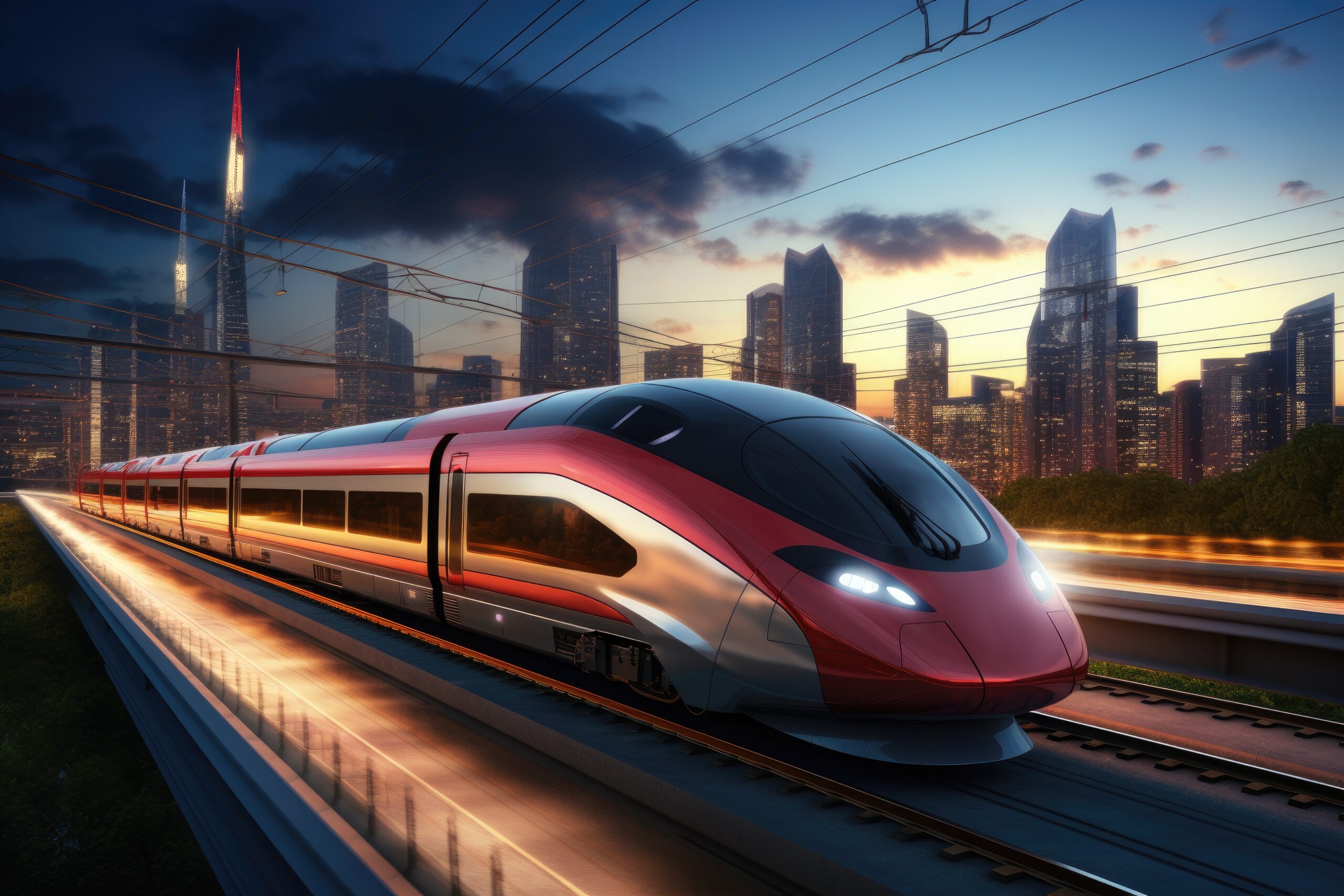High-Speed Rail Projects
Accelerating Regional Development and International Cooperation
In global infrastructure development, high-speed rail projects are key to promoting regional economic integration and social development. CNICC is committed to facilitating rapid connections between regions through high-speed rail projects, reducing travel time, enhancing urban competitiveness, and promoting socio-economic development in the areas along the routes. By closely collaborating with Chinese state-owned enterprises, we leverage top-notch technology and extensive project execution experience to ensure the efficient implementation and long-term operation of high-speed rail projects.
Advantages of CNICC
In today's rapidly globalizing world, high-speed rail is an essential component of modern transportation, significantly shortening the distances between regions and promoting integrated economic development. CNICC is committed to enhancing regional economic connectivity through high-speed rail projects, boosting urban competitiveness, and driving socio-economic development in the areas along the routes.
Project Management Advantages:
CNICC has extensive experience in managing complex high-speed rail projects worldwide. Our project management team focuses on every detail of the project, from initial design to final delivery, ensuring successful implementation according to high standards and strict timelines. Our comprehensive project management approach includes risk assessment, cost control, time management, and quality assurance, safeguarding the smooth completion of the project.
Financing Advantages:
CNICC leverages its influence in international financial markets and strong partnerships with policy banks to ensure stable and favorable financing support for high-speed rail projects. We combine government preferential loans, sovereign fund collaborations, and other financing tools to provide ample funding security for projects, effectively reducing financing costs and optimizing the capital structure.
Government Preferential Loans:
CNICC actively collaborates with governments and financial institutions worldwide to secure government preferential loans for high-speed rail projects. These low-cost loans not only alleviate the financial burden on governments but also accelerate infrastructure construction and modernization, driving rapid regional economic development.
Collaboration with Chinese State-Owned Enterprises:
Collaboration with Chinese state-owned enterprises enables us to introduce advanced high-speed rail technologies and management experiences. These enterprises possess world-leading technology and extensive construction experience in the high-speed rail sector, ensuring the technological advancement and operational efficiency of our projects.
Transit-Oriented Development
In the planning and development of high-speed rail projects, CNICC fully utilizes the Transit-Oriented Development (TOD) model to promote the rapid development of surrounding commercial real estate through efficient land use and multifunctional integration. This transport hub-centric development model not only enhances the commercial value of the region but also strengthens community vitality and accessibility.
CNICC adopts the TOD model in the commercial real estate development around high-speed rail stations, planning and constructing multifunctional complexes that include shopping centers, office buildings, residential areas, and entertainment facilities centered around the railway station. This development strategy optimizes land use, increases the attractiveness of public transport, and promotes environmental sustainability. Through this model, CNICC effectively integrates transportation with regional development, creating a mutually beneficial urban living circle.
The TOD model significantly enhances the economic benefits of real estate projects by increasing foot traffic and enhancing location attractiveness, thereby boosting commercial activities and retail sales. Furthermore, TOD can improve rental rates and asset values, providing investors with stable and substantial returns.
Key Advantages
Enhanced Accessibility and Convenience
Through concentrated development, the TOD model maximizes the economic potential of transportation nodes, enhancing the convenience and efficiency of regional transportation.
China Nexus Infrastructure Capital Group prioritizes land near transportation hubs for development projects, leveraging the high foot traffic generated by key nodes such as high-speed rail stations to design convenient and efficient transit structures. This strategy not only reduces urban traffic congestion but also significantly enhances the commercial attractiveness and economic activity of the area, directly driving the value appreciation of commercial real estate.
Integrated Functional Zone Design
TOD projects achieve seamless integration of living, working, and entertainment through the design of multifunctional zones.
CNICC creates multifunctional spaces in TOD projects, such as mixed-use buildings that integrate commercial, residential, office, and entertainment facilities. This design not only optimizes the efficiency of land resource utilization but also enhances the quality of life and convenience for work within the area, attracting more residents and businesses, thus improving the economic benefits and feasibility of the projects.
Green Sustainable Buildings
The TOD model emphasizes environmental protection and sustainability by adopting green building standards, enhancing the energy efficiency and environmental friendliness of the structures.
CNICC promotes the use of environmentally friendly materials and energy-efficient building technologies, such as green roofs, energy-saving windows, and solar panels. These measures help reduce overall environmental impact and lower operating costs. By implementing these green strategies, CNICC not only enhances the market competitiveness of its buildings but also aligns with the modern urban demand for sustainable development.
Enhancing Community Connectivity and Vitality
TOD projects enhance community connectivity and overall vitality through optimized design and spatial layout.
CNICC emphasizes the creation of public spaces and pedestrian-friendly environments in the design of TOD projects, such as parks, plazas, and walkways. These facilities not only improve the quality of life for community residents but also promote interaction and connectivity within the community and surrounding areas. Strengthening community vitality further fosters the development of commerce and retail, injecting new momentum into the regional economy.
Utilization of Public-Private Partnership (PPP) Model
By collaborating with governments and other private sector entities, TOD projects can effectively leverage resources from all parties, achieving a win-win outcome.
CNICC actively seeks partnerships with local governments and other private enterprises to jointly invest in and develop TOD projects. This public-private partnership model not only provides diversified funding sources and expertise for the projects but also helps balance risks and returns. Through this collaborative approach, CNICC can effectively facilitate and optimize the smooth progression of projects, accelerating the process from planning to implementation, and ensuring efficient returns on investment and maximization of socio-economic benefits.
Overview of Project Collaboration Models
China Nexus Infrastructure Capital Group employs diverse collaboration models in high-speed rail projects, including Public-Private Partnerships (PPP), Design-Build-Finance-Operate-Transfer (DBFOT), and Build-Operate-Transfer (BOT) structures. These models enable CNICC to share risks with project stakeholders, optimize resource allocation, and ensure the smooth execution and long-term sustainability of projects.
Project FinancingSolutions Overview

Singapore-Malaysia High-Speed Rail Project Case Study
The Singapore-Malaysia High-Speed Rail project is a key cross-border infrastructure initiative connecting Singapore and Malaysia, aimed at enhancing economic exchange and regional integration between the two countries. The project spans approximately 350 kilometers, with a designed speed of up to 350 kilometers per hour, and is expected to significantly reduce travel time between Singapore and Kuala Lumpur.
View theSingapore-Malaysia High-Speed Rail Case



